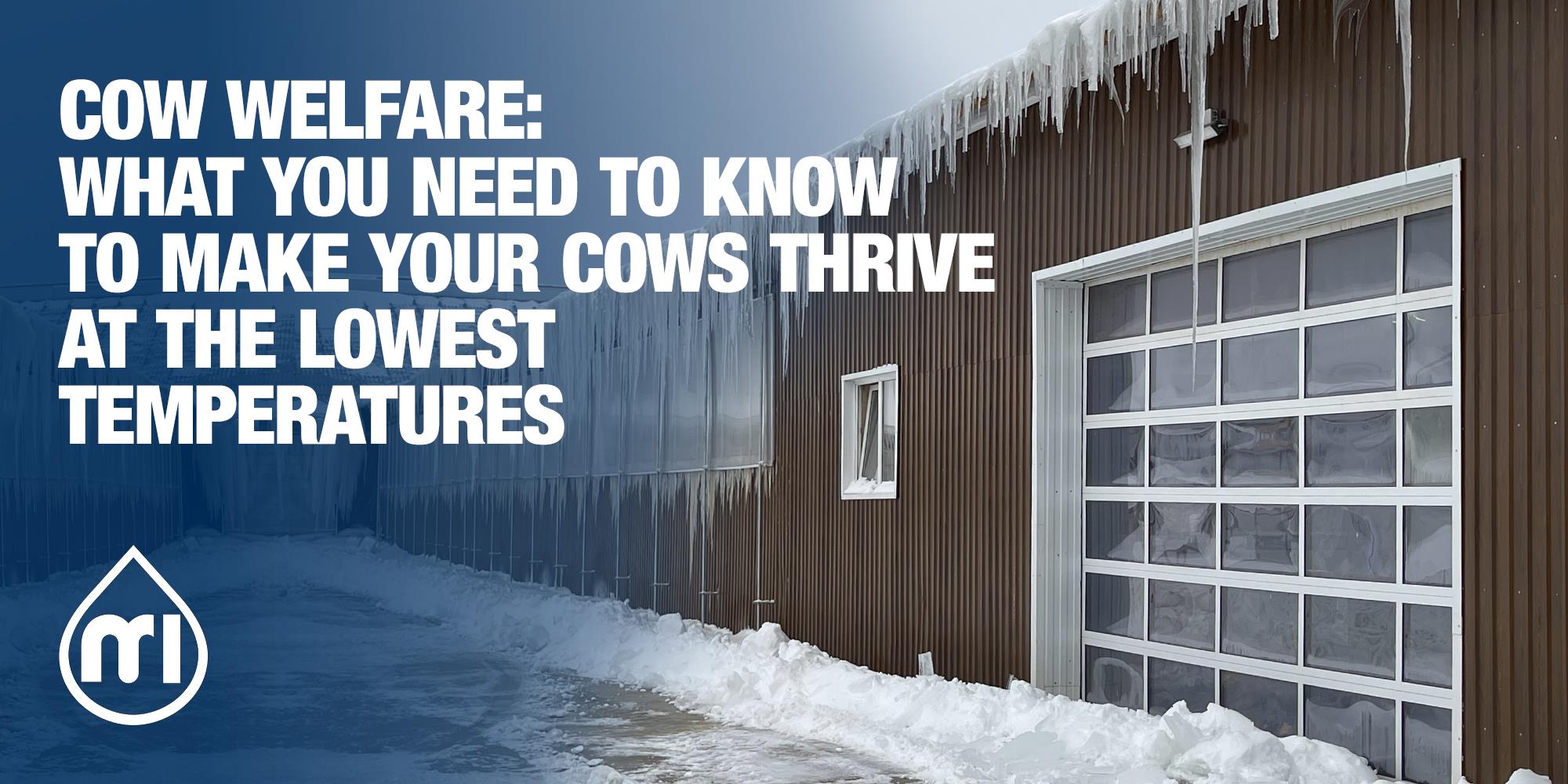
Cow Welfare: What you need to know to make your cows thrive at the lowest temperatures
How can you recognize if your cow’s welfare is good or bad? And why prioritizing it is crucial for the efficiency of your farm? Let’s find out in this Blog series!
After a general overview of how to elevate cow welfare, let’s now focus on how cows face extremely low temperatures.
Just like very high temperatures, excessively cold weather can also seriously endanger the health of cows. To make sure you can best protect your herd from this threat, Pavel Semenychev, Technical Sales and Support Manager from Russia, is ready to share with you the main dairy herd improvements to implement during the coldest months of the year.
Keep an eye on these KPIs
The ideal environmental temperature for cows lies approximately between -5°C and 20°C, as stated by the University of Missouri Extension. Although these animals seem to have a rather strong endurance to extreme cold, farmers should make sure they provide cows with the necessary feed intake they need to keep a normal body temperature, while continuing to produce sufficient milk. Moreover, cows should be protected from any danger related to extremely cold weather conditions, such as frozen, slippery surfaces, and wind.
At this point, you might be wondering “How can I understand if my cows are cold, or if I should improve my herd management?”
To achieve this, it is important to monitor the animals, relying on the support of professionals, such as vets and consultants, and, if possible, a Herd Management Software, which ensure you a complete overview of the main indicators:
- Breathing rate: if it is too heavy and accelerated, it means that the cow might be suffering from a contagious lung infection, such as pneumonia.
- Shivering: thanks to the feed intake, cows are able to produce energy that is converted into heat and maintain their body temperature sufficiently high. If a cow is shivering, it means that it cannot produce enough energy, due to a lack of nutrients in its daily feeding.
- Lower milk production: likewise, a decrease in milk release can suggest a lack of energy for milk production, as most of it is used to produce heat.
- Cows slide on ice: this is a very dangerous element, which can seriously harm animals, making them stressed, unwilling to exit their pens, and reluctant to move.
- A decrease in the time lying down: this factor can indicate that the bedding is uncomfortable, due to wet, muddy, and frozen lying surfaces. Since lying down is essential for rumination and efficient milk production, not only can short lying time cause lameness and consequent stress, but it also leads cows to eat less, producing less energy for heating and milk production.
An introduction to the main dairy herd improvements
Injuries, serious diseases, unforeseen expenses, antibiotics, wasted milk, and, in some cases, even death. These are the crucial enemies of efficiency, causing financial losses and supplementary labour. We are sure you do not want them to affect your farm. That’s why you can count on our precious advice!
Let’s start from saying that the main dairy herd improvement to ensure cow welfare even at extremely low temperatures can be grouped in 3 main areas:
- Environmental improvements, linked to barn settings.
- Feeding improvements, which gather those tips crucial to ensure cows a consistent, sufficient feed intake to maintain both adequate body temperature and sustainable milk production.
- Cow comfort improvements, including advice on how to ensure maximum cow welfare, both inside and outside the milking parlour.
Are you curious to know more about dairy herd improvements to make your cows thrive even at the lowest temperatures? Make sure not to miss our next Blog episode!
Sources:
- How to reduce heat stress in dairy cattle Keown, Grant - University of Missouri Extension, 1993
- Managing cow welfare in the winter months Wedzerai – DairyGlobal, 2023
- Winter animal care: tips to keeping your animals healthy and happy during winter months Ockert – Michigan State University Extension, 2023
